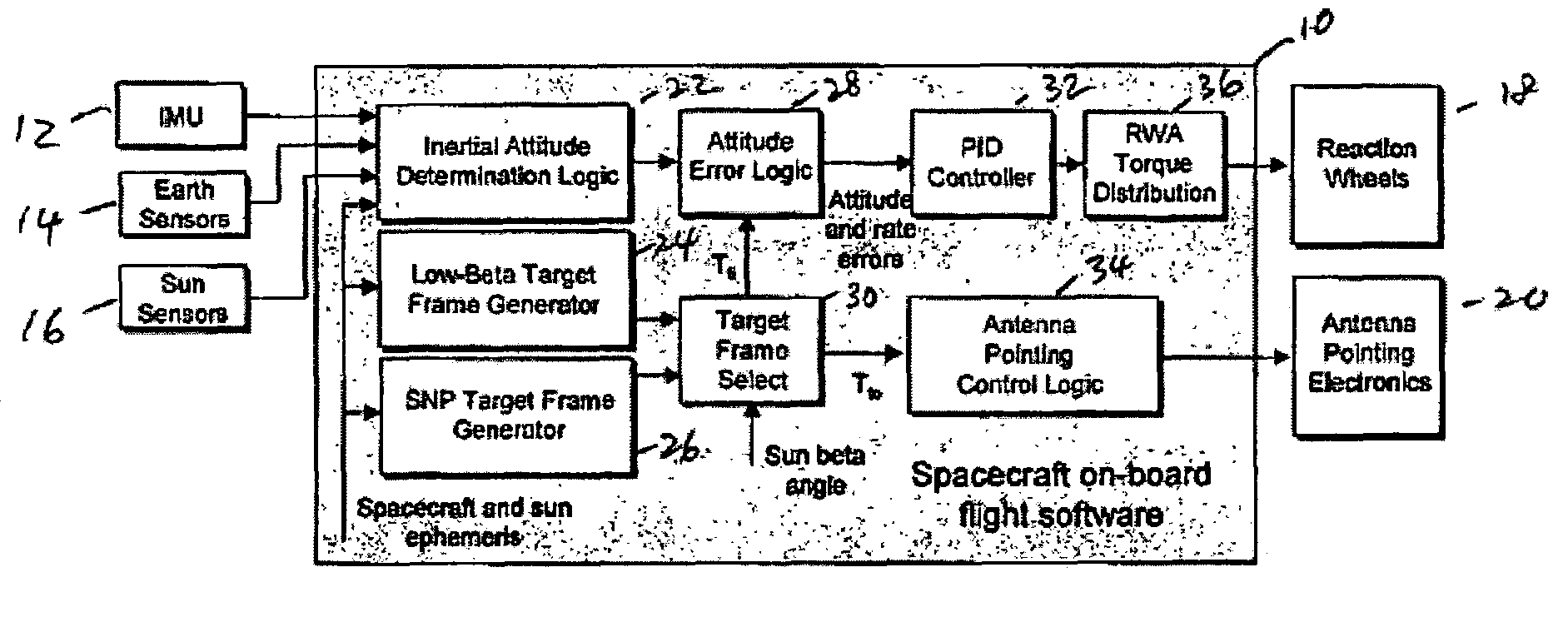Attitude and antenna steering system for geosynchronous earth orbit (GEO) spacecraft
a geosynchronous earth orbit and steering system technology, applied in the field of spacecraft control, can solve the problems of increasing the cost and mass of spacecraft, reducing the heat rejection capability by as much as 25%, and power loss up to 8.3%, and achieves the effect of high angular ra
- Summary
- Abstract
- Description
- Claims
- Application Information
AI Technical Summary
Benefits of technology
Problems solved by technology
Method used
Image
Examples
Embodiment Construction
[0022]The present invention in the form of one or more exemplary embodiments will now be described. FIG. 1 illustrates a system 10 according to one embodiment of the present invention. The system 10 receives attitude data from a number of attitude sensors. Such sensors include, for example, earth sensors 14, sun sensors 16, or star trackers, that are capable of providing three-axis attitude information. The system 10 also receives input information from an Inertial Measurement Unit (IMU) 12. The IMU 12 provides three-axis angular rate information that is propagated in time to maintain an accurate estimate of the inertial-to-body coordinate transformation. When attitude data is available, it is used to update the estimated attitude and gyro biases. It should be noted that earth sensor data may only be available when the roll angle is below roughly two (2) degrees. If star trackers are used, then attitude data may be available continuously. Using the attitude data provided by the atti...
PUM
 Login to View More
Login to View More Abstract
Description
Claims
Application Information
 Login to View More
Login to View More - R&D
- Intellectual Property
- Life Sciences
- Materials
- Tech Scout
- Unparalleled Data Quality
- Higher Quality Content
- 60% Fewer Hallucinations
Browse by: Latest US Patents, China's latest patents, Technical Efficacy Thesaurus, Application Domain, Technology Topic, Popular Technical Reports.
© 2025 PatSnap. All rights reserved.Legal|Privacy policy|Modern Slavery Act Transparency Statement|Sitemap|About US| Contact US: help@patsnap.com



